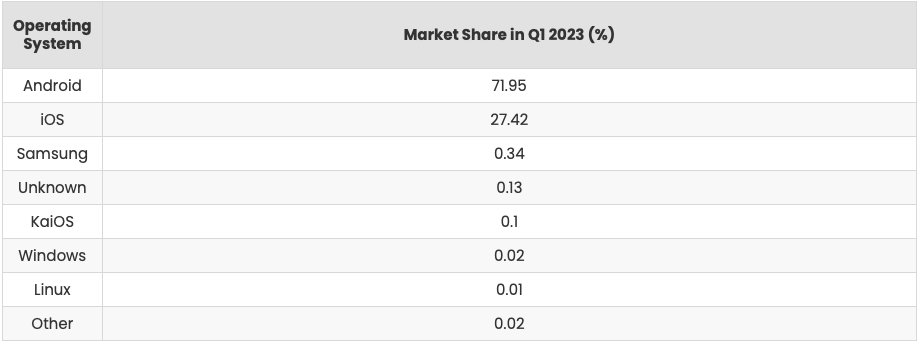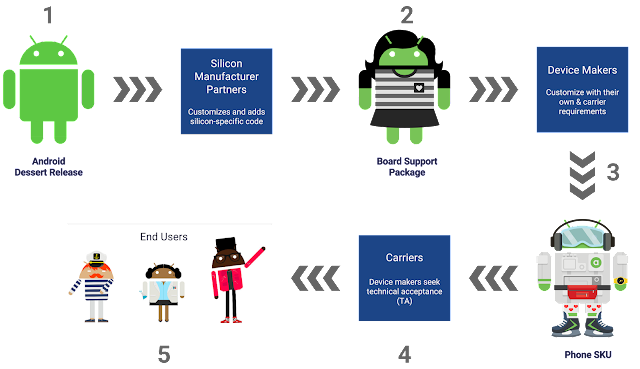You’ve more than likely heard the term “open source,” being tossed around by your coworkers, peers, and probably the news. ChatGPT’s open source systems have become fodder for news articles as the concept is at the heart of the AI wars.
The term “open source” often conjures up images of the hacker’ish, nefarious but nerdly, dude donning monster headphones, eating Cheetos washed down with energy drinks, sitting in a dark basement on an oversized laptop doing coder things.
But there is more to it than that (thankfully).
But What Is Open Source?
Open source is a term that refers to a practice where a software rights holder allows users rightful access to study, modify, and redistribute the software. The open source aspect refers directly to allowing access to the software’s central code. This code enables changes in design, commands, and overall behavior.
When open source is leveraged, it can vastly upgrade user experiences and free developers creatively. For the basic device user, this means more sophisticated Android apps. But there’s more to it than that, however, we digress.
The concept of open source dates back to 1983 when a programmer at MIG, Richard Stallman, proposed that software should function on a higher, more accessible level. Stallman continues to believe freedom of software source code is an ethical issue.
The movement functions under the governance of The Open Source Initiative (OSI), which acts as a repository of open source software.
Android as an Open Source Initiative
“Android unites the world,” is the team’s slogan. The Android open source project offers useful education items for programmers looking to modify the OS’ interfaces, architecture, security and compatibility.
The project is backed by Google and results in customized variants of the OS. In addition, Google believes allowing Android to exist in an open source environment helps keep the system more stable and secure.
Likewise, its main competitor, Apple’s iOS, is a closed project that’s diametrically opposed to open source.
We aren’t here to weigh the pros and cons of Google and Apple’s competitive differences, only to point them out occasionally.
The History of Android and Open Source

For those interested in history, keep reading. For those who don’t care, well, surf through this section to the next.
The story of Android begins in 2003 with a start-up of the same name, founded by Andy Rubin and his team. Their goal was to develop a mobile operating system designed to empower devices to be highly aware of their owner’s location and preferences.
Google, already a tech giant, was keenly interested in the mobile market. Recognizing the potential of Android’s project, Google acquired the start-up in 2005. Although the exact plans at the time of the acquisition were not made public, it became evident later that Google intended to harness the power of open source in order to penetrate the smartphone industry.
Google officially unveiled the Android platform to the world in 2007. Google decided to release Android under an open-source license instead of creating a proprietary, closed-source system as many other tech companies had done. This meant that the code behind Android was freely available for anyone to view, modify, and distribute.
Google’s decision to go open source was a strategic move that significantly shaped the future of Android. By opening up the code, Google enabled device manufacturers, developers, and even tech enthusiasts to tailor Android to their specific needs. The vast community of contributors could identify and fix bugs faster, add useful features, and expand the ecosystem exponentially.
For a mobile OS, Google changed the game and vastly upgraded it’s competitive position with dominant Apple. On a global level, Android dominates Apple’s iOS with a 70%+ use case compared to Apple’s which falls below 30%.

So although in the United States we may see iOS as a mainstay, that doesn’t speak to the widespread global impact Google’s open source mobile project has held for over a decade.
What Does The Future Hold for Android and Open Source?
A whole lot, actually.
Project Treble and Mainline: Google’s Attempts to Address Fragmentation
In an effort to mitigate Android’s fragmentation issue, Google introduced Project Treble in 2017 with the launch of Android 8.0 Oreo. Project Treble restructured Android’s framework to separate the device-specific hardware code from the Android Operating System code, making it easier and faster for manufacturers to update devices to new versions of Android.
Below is the “life of an Android release” flowchart released by Google in its 2017 blog post. It includes the core steps that occur during a Google release. This flowchart is helpful to understand the vast upgrades that Project Treble offers.

Following Project Treble, Google introduced Project Mainline in 2019 with Android 10. This initiative allows Google to update specific internal components of Android (known as ‘modules’) directly through the Google Play Store, bypassing device manufacturers and carriers. This speeds up the delivery of important security patches and performance improvements, keeping devices more secure and up-to-date.
Both of these initiatives mark significant steps in addressing the long-standing issue of fragmentation in Android, demonstrating Google’s ongoing commitment to improving the Android ecosystem.
Future Opportunities for the Open-Source Community in Android’s Development
The open-source nature of Android will continue to be a vital driver of its innovation. The Android Open Source Project (AOSP) provides a platform for developers worldwide to collaborate and contribute to the development of Android. Whether it’s adding new features, improving security, or fixing bugs, the open-source community will remain at the forefront of making Android better.
One potential area of focus could be the enhancement of privacy and security features, considering the increasing concerns about data protection. Another could be the development of open-source applications with more transparent data practices, giving users more control over their data.
Impact of Open Source on the Upcoming Versions of Android
As we look towards future versions of Android, the open-source community will play a vital role in shaping its development. Google continues to invest in making Android more modular and more easily updatable, and these improvements will be made available to the open-source community via AOSP.
Moreover, as Android extends beyond phones to cars, televisions, and even wearable devices, there will be new opportunities for the open-source community to adapt Android to these new platforms and uses.
Conclusion
Open source is embedded in Android’s DNA and will continue to play a significant role in its future. Through initiatives like Project Treble and Project Mainline, Google is ensuring that the principles of open-source collaboration continue to drive Android’s evolution and success. With the collective efforts of developers around the world, Android will continue to innovate and adapt, staying true to its open-source roots while providing a robust, customizable, and user-friendly operating system for billions of devices.






Comments closed.